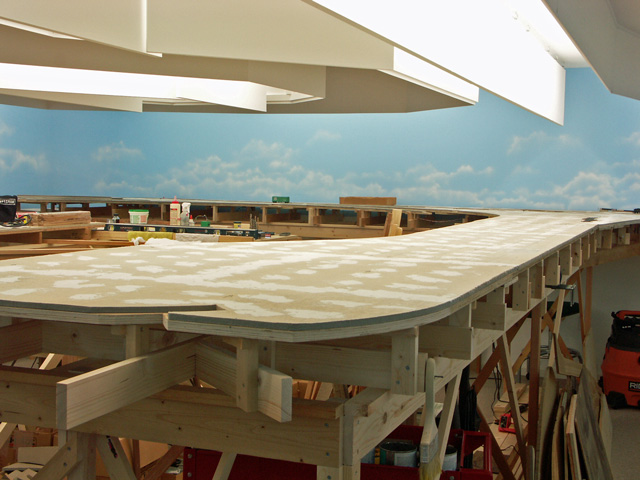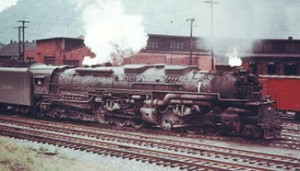The Willis yard sub-roadbed (the tabletop) is installed and after a bit of surfacing work, it will be ready for track. The surfacing work is primarily sanding and filling around the joints in the Homasote panels. As I’ve mentioned in other posts, the Homasote sold today isn’t very consistent in it’s thickness and there is invariably a height mismatch when butting panels up to each other.
 But the really good thing about getting this area done is the fact that the actual Louisiana Central mainline can now be laid. Up to this point, the only LC trackage was that in staging and the lead up to the crossing with the Illinois Central. This is a new milestone in the construction. In addition, the sub-roadbed can now proceed west of Willis, heading down the backside of the peninsula and up through Maynard. This will be some real progress when that is done, and it shouldn’t be that far into the future.
But the really good thing about getting this area done is the fact that the actual Louisiana Central mainline can now be laid. Up to this point, the only LC trackage was that in staging and the lead up to the crossing with the Illinois Central. This is a new milestone in the construction. In addition, the sub-roadbed can now proceed west of Willis, heading down the backside of the peninsula and up through Maynard. This will be some real progress when that is done, and it shouldn’t be that far into the future.
In keeping with my preference for construction first at the wall, then progressing toward the aisle, it is near time for me to start thinking about the Spencer logging operation. The line going up into the woods (between Maynard and Whitcomb) must be constructed before the LC main (which is near the aisle) between those points can be installed. These next several months will be quite busy.
Wiring is keeping up nicely. Four of the seven booster districts have been completed; only track feeders have to be added as additional track is laid. The other three will be required as the track I just wrote about is installed.
I’m also starting to think about the fascia for the layout edge. While I don’t plan to install it immediately, I do plan to build sections soon after the trackage in an area is essentially completed. Since all the controls will be mounted on the fascia, it would be nice to have it installed when I start wiring up all those controls so there is a place to put them.
-Jack

